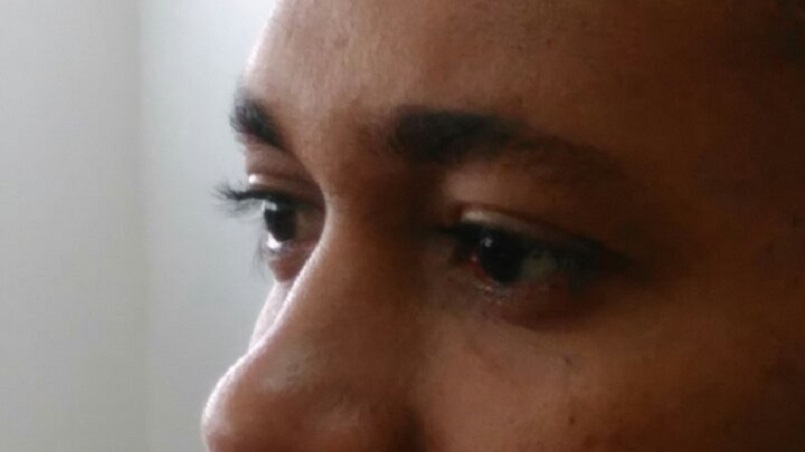
Technology makes life easier but can also be damaging.
One cannot escape this because the modern world is full of technology.
According to WikiHow, Americans, on average, spend around 30 percent of their day staring at a screen.
Best advice is to limit your time looking at computer, tablet and phone screens if possible.
While science hasn't yet proven that looking at computer screens causes permanent eye damage, it may cause eye strain and dry eyes. The glare from computer screens causes muscle fatigue in the eyes, either from being too bright or too dark.
Symptoms of eye fatigue include eye irritation, difficulty focusing, dryness or excessive tears, blurred or double vision, light sensitivity, or pain in the neck, shoulders or back.
Here are three easy methods to keep your eyes healthy, according to WikiHow:
1.Fixing the Problem Physically
- Sit further away from the screen
Do not sit so far away that you have to strain to read the text. 16–24 inches (40.6–61 cm) is a good distance, depending on your eyesight and the size of the screen.
Consider changing the settings to show larger text on every site accessed on your browser. Specialty applications on your computer may be able to do this. Additionally, there are options in your web browser to change this feature.
- Blink. People blink at least half as much as normal when staring at the computer screen, because people usually squint and your eyes are not made for looking at monitors. It may be hard to remember to do this constantly, so every now and then you can close your eyes for a few seconds.
- Lubricate your eyes. You can do this using with artificial tears or eye drops. This is especially helpful before and after long periods of time with computer use. A well-hydrated eye optimises eyesight.
Stay hydrated so you are sure your eyes can make tears.
- Avoid direct air movement. If you have a fan on your desk, you may consider moving it to avoid drying out your eyes. Direct air movement can reduce your eyes’ natural moisture.
- Humidify your work-space. If you find your office or room too dry, consider using a humidifier. This can circulate and introduce more moisture into the air and keep you and your eyes moist.
2.Developing Good Habits
- Employ the 20-20-20 rule. Every 20 minutes, look at an object 20 feet (6.1 m) away for 20 seconds to get them adjusted to long-distance too, so you are ready when you get off the computer. Make sure you look at the object for the full 20 seconds. It may be helpful to set a timer or download free software that reminds you to take breaks.
- Take regular breaks. Be sure to rest your eyes while working long hours on the computer. Every hour, try a break and step away from your computer. Getting up and being active can not only help eye health but also minimise other health concerns like heart disease and blood clots.
- Work smarter, not harder. Practice time management skills to be more productive in less time. Brush up your computer knowledge to access things more quickly.
Learn to type faster. Practicing your computer skills can make you more efficient. This will reduce the amount of time you spend doing everyday tasks, such as e-mailing.
Print up long pages that you would have to read on the computer. If you are really sensitive, consider getting a job that doesn't require computer use on a daily basis.
- Light your workspace properly. Eye strain is often caused by bad lighting, either from bright sunlight or harsh indoor lighting. Avoid working under fluorescent lighting. Close drapes or windows to adjust natural light in your workspace. Do not position your monitor in front of a window, unless you can control the lighting in the room.
- Minimise glare. Glare on computer monitors can bounce of walls or desk surfaces. Consider painting walls with a matte finish or use darker colours.
- Get your eyes checked regularly. Good health requires monitoring. You should keep regular check-ups with your doctor or optometrist to maintain healthy eyesight. These experts can give you further guidance to help you keep your eyes healthy.
3.Adjusting Settings on Your Computer
- Adjust the screen contrast. Contrast is the strength of the colours compared next to each other. Contrast should usually be in the level of the 80s, but they are different for different screens. You can change the contrast of your computer monitor by going to your computer's control menu and clicking "Appearance and Personalization."
- Adjust screen brightness. You want your monitor's brightness to match the lighting in your workspace to avoid eye dryness. You can change these settings in your computer's control panel.
- Upgrade to an anti-glare monitor. The development of computer monitors keeps evolving. You can purchase monitors specifically calibrated to reduce glare or even automatically change monitor settings based on light levels.
- Download a colour temperature program. Applications like F.lux[9] are able to modify the colours on your monitor. Programs like this automatically change the colour to help reduce eye strain and eye dryness.
Be mindful that too much time on the computer can cause fatigue. Take breaks often.
Your eyes can also become bloodshot from being dry but don't use "get the red out" drops since these can cause rebound redness and this makes the bloodshot condition chronic. Get rid of the dryness and the bloodshot appearance goes away.
Furthermore, make sure that you get enough sleep every night to help prevent eye fatigue. Adults require about 7-8 hours of sleep per night.
http://www.wikihow.com/Avoid-Getting-Dry-Eyes-from-the-Computer
